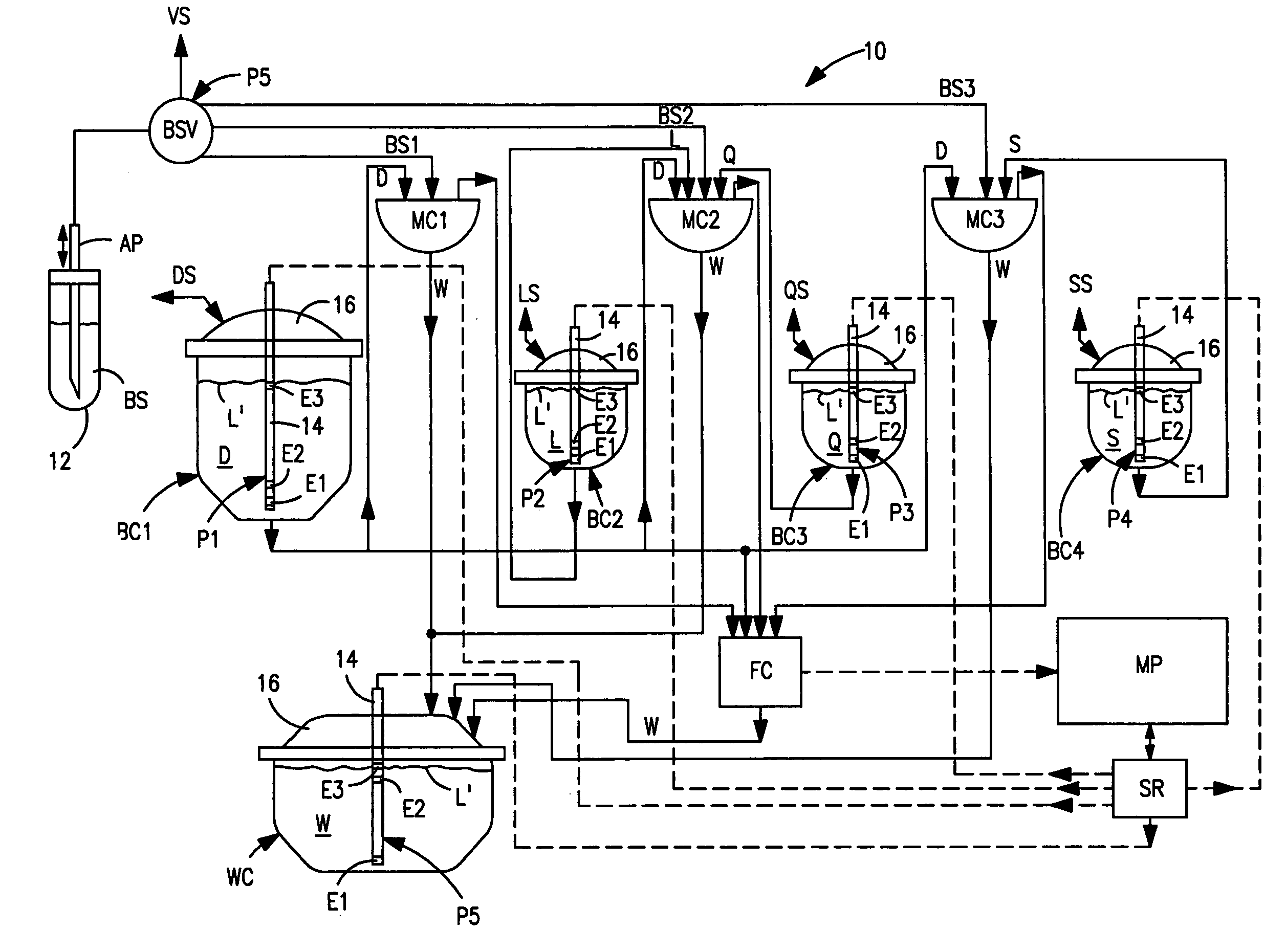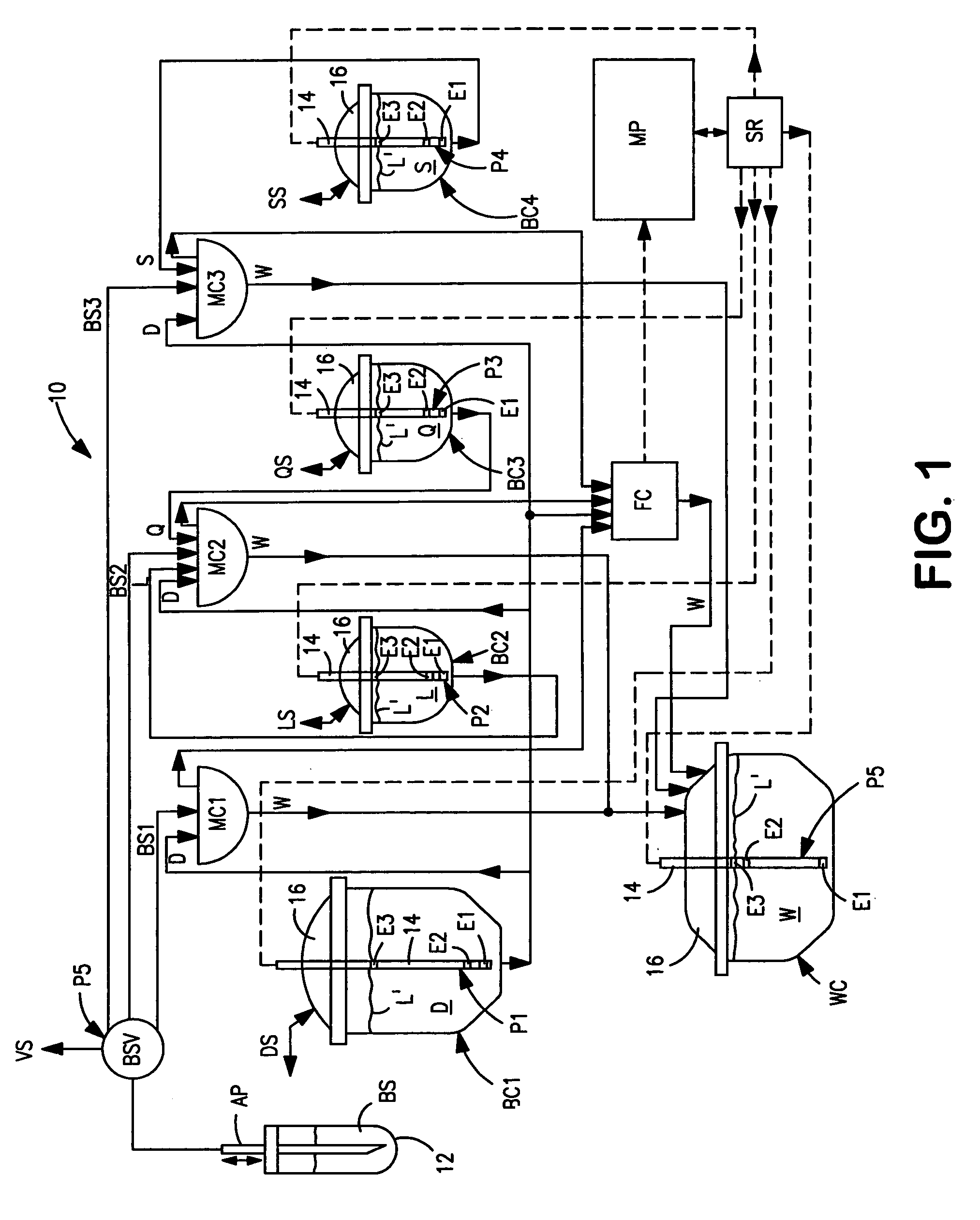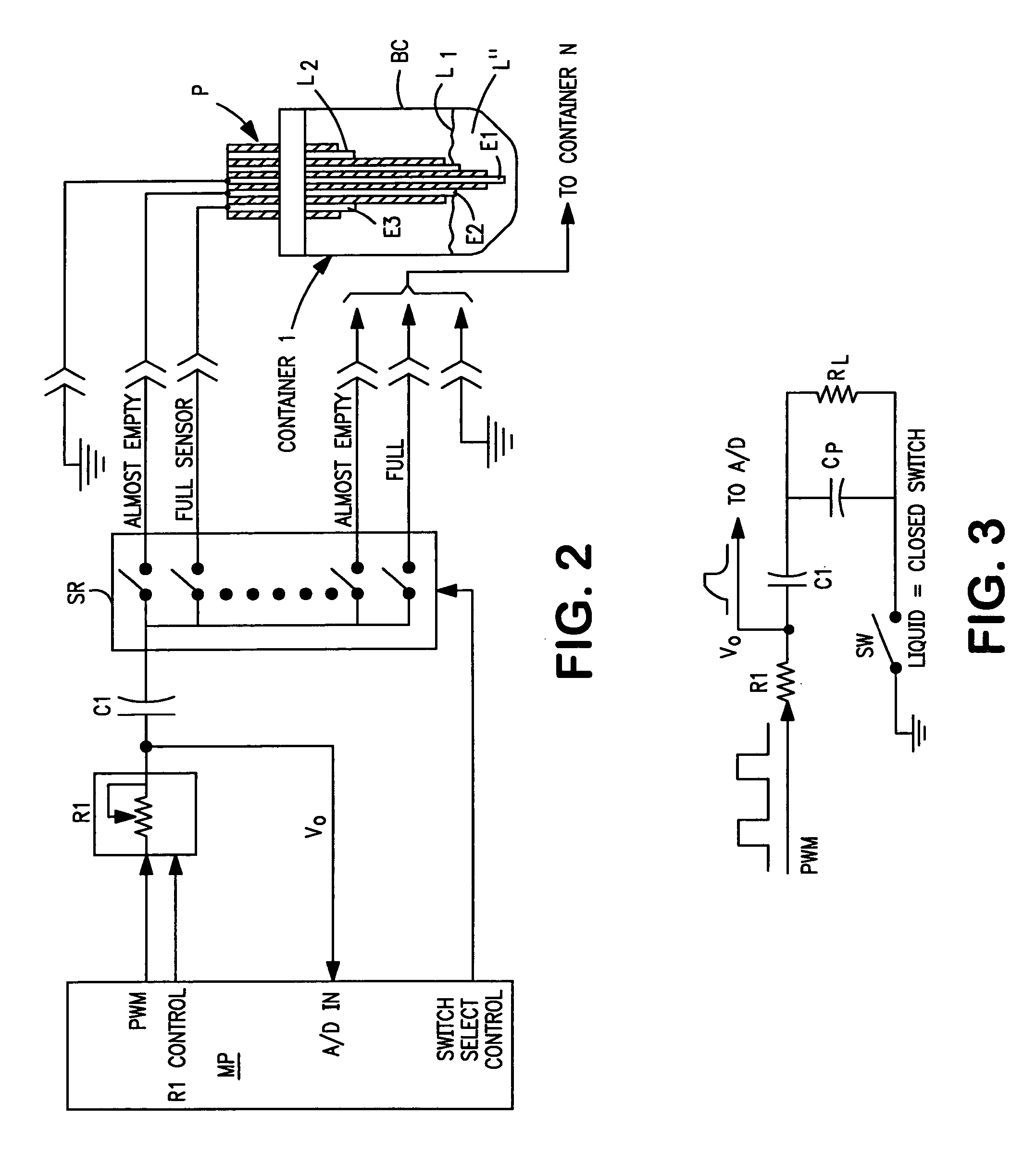Method and apparatus for detecting liquid levels in liquid-storage containers
a liquid storage container and liquid level technology, applied in liquid/fluent solid measurement, instruments, machines/engines, etc., can solve the problems of biologically hazardous clean-up process, inaccurate results, and large amount of non-reactive liquids consumed by instruments, etc., and achieve high reliability
- Summary
- Abstract
- Description
- Claims
- Application Information
AI Technical Summary
Benefits of technology
Problems solved by technology
Method used
Image
Examples
Embodiment Construction
[0020]In the ensuing detailed description, a preferred embodiment of the invention is disclosed as being embodied in a hematology instrument. It will be appreciated, however, that the invention will find utility in many other types of analytical and manufacturing instruments that gradually consume liquids of different types in carrying out the processes for which they are designed, and in which it is particularly important to continuously monitor the level of liquids in different containers to assure that the liquid supplies never “run dry” or overflow their containers. As will become apparent, the invention is particularly useful as the liquid containers of such instruments increase in number and shrink in size to meet strict space requirements on the instrument platform.
[0021]Referring now to the drawings, FIG. 1 is a schematic illustration of a conventional hematology instrument 10 embodying the present invention. Briefly, a blood sample BS to be analyzed is selectively aspirated...
PUM
 Login to View More
Login to View More Abstract
Description
Claims
Application Information
 Login to View More
Login to View More - R&D
- Intellectual Property
- Life Sciences
- Materials
- Tech Scout
- Unparalleled Data Quality
- Higher Quality Content
- 60% Fewer Hallucinations
Browse by: Latest US Patents, China's latest patents, Technical Efficacy Thesaurus, Application Domain, Technology Topic, Popular Technical Reports.
© 2025 PatSnap. All rights reserved.Legal|Privacy policy|Modern Slavery Act Transparency Statement|Sitemap|About US| Contact US: help@patsnap.com



